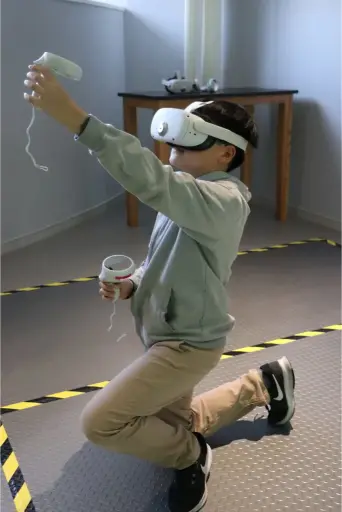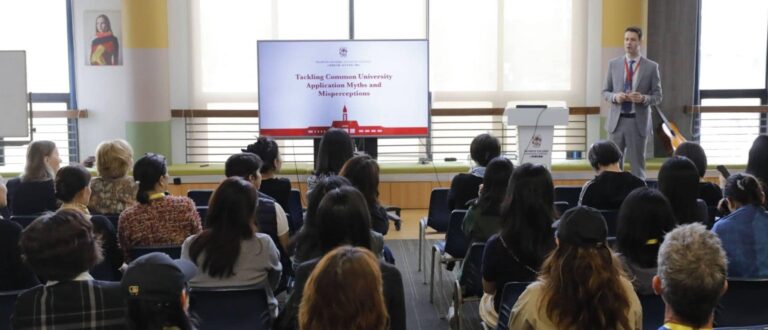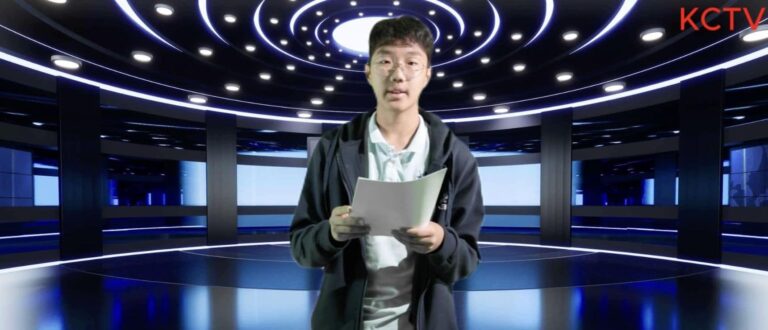Technologies like Virtual Reality (VR) and Augmented Reality (AR) hold great promise for use in instructional design in education. In a way that traditional teaching approaches have not been able to match, these new immersive and engaging experiences utilize modern technologies to offer students new ways to study, interact with their classmates and teachers, and absorb knowledge. Digital immersion through VR and AR not only complements student engagement but also improves retention and understanding of complex concepts.
What is Virtual Reality?
Virtual Reality is a computer-generated environment that replicates the actual world and offers a sensation of presence and immersion. Users can interact with people and objects in the virtual world simply by donning a headset. VR technology has many educational uses, ranging from scientific investigations to language immersion initiatives. It can be especially useful for offering simulations that closely resemble actual events that are hard or impossible to recreate in a conventional classroom. This could be an immersive exploration of an ancient site in history class or taking students on a museum virtual tour for art class. Interactive learning enables students to explore remote places and engage in environments that were once only accessible by domestic or international travel.
While VR may not perfectly replicate the experience of real-life travel, it provides a cost-effective alternative that opens doors for students who may not have the means to afford it. Moreover, it offers significant advantages by eliminating logistical and planning challenges, ultimately saving time and money and enhances accessibility for learners.
What is Augmented Reality?
Augmented Reality refers to technology that superimposes digital content over the real environment to produce an immersive and interactive learning environment. With the use of smartphones or other devices, augmented reality allows digital visuals or data to be superimposed over the real world.
Enter the Matrix
At Hangzhou International School (HIS) we have unveiled a new multimedia facility called ‘The Matrix’ fitted with green screens, a podcast studio, and VR/ AR technology. This equipment is accessible to students of all ages, from lower school students through upper school, and faculty and teachers. Parents appreciate that we can provide a safe and controlled environment for their children to explore new worlds and concepts. They recognize the value of this technology in fostering creativity, critical thinking, and problem-solving skills, all while ensuring a supervised and enriching experience.
With the use of these technologies, teachers can produce simulations and design interactive lessons that provide students with immediate feedback, increase student engagement, and make abstract ideas come to life. For example, our new media facility has been used to explore the layers of the earth’s crust or demonstrate a volcanic eruption. Spaces such as these also give our students creative license to explore their imagination, elevating their skills in film and photography. At HIS, we encourage students to explore innovative techniques and use ‘The Matrix’ room to expand their artistic horizons.
Furthermore, our new media facility has gained tremendous popularity among parents and guardians who eagerly don headsets and enjoy the green screen during community events and curriculum nights. It’s a powerful tool for immersive learning, all the while bridging generations and rousing stimulating conversations about the future of technology.
Virtual and augmented reality are reshaping the landscape of education, offering new opportunities for personalized learning, interactive experiences, and improved outcomes for students and teachers alike. By leveraging VR and AR technology, we can create dynamic and engaging learning experiences for students of all ages and confidently prepare the next generation of learners for success.
Here are some tips for other international school leaders looking to implement VR and AR technology:
1. Garner teacher buy-in and tailor the space based on teacher needs
To ensure the successful integration of VR/ AR technology, it is crucial to gain support and enthusiasm of your teachers. Don’t just build the space and hope for the best! Teachers should be let in on the conversation early, gather ideas, listen to their concerns and ultimately build the space based on teachers needs. By tailoring the space to meet specific needs, you can ensure their investment in new technology. It is also a good idea to have a designated faculty member as the go-to expert and equip them with the necessary training to assist and support teachers when the room is in use. Recognize that not all teachers may be so tech-savvy, so providing ample support will enable them to embrace the media room and see it put to good use.
2. Consider space and allocate enough room
Thoughtful planning of the layout and space will ensure a comfortable and immersive experience for students. Keep in mind that VR/ AR facilities require a spacious, open area. Consider the number of headsets required for a class, aim for at least half the classroom’s capacity to be filled i.e. a class of 20 students should have 10 headsets.
3. Embrace active learning
Immersion without action is no different to putting on a movie for students. Ask yourself, how are we going to utilize VR/ AR and apply it in an active way? Encourage students to move beyond passive consumption and engage in creation and live learning using VR/AR headsets. Provide opportunities for them to develop their skills in world-building, animation, and coding. By leveraging the technology for active learning activities, students can become active creators, unleashing their imagination skills, critical thinking, and problem-solving abilities. One of our Design Technology teachers gave a great example of active learning in Lower School. Kindergarten students donned VR headsets and immersed themselves in a lesson on biomes and ecosystems, drawing pictures to understand the climate. They then applied design principles to create animals suited to these environments. This example showcases the teacher’s effective use of technology to enhance student engagement and create a multidimensional learning experience.
4. Ensuring a strong technological foundation
The technical infrastructure is foundational to the success of VR and AR within schools. A school would need a network capable of handling extra data load, especially when multiple VR headsets are used simultaneously. To avoid any connectivity or latency issues that could affect learning, invest in internet with sufficient bandwidth and enough capacity. Also make sure that hardware, including laptops, VR/AR headsets, and other essential devices is reliable, regularly maintained, and up to date. Using a specialized IT support team to take care of updates and technical issues will help ensure seamless technological integration.
5. Develop a curriculum integration plan
To ensure that one can get the most out of VR and AR, it is important to carefully integrate the technology into the curriculum. First identify ways these technologies can improve learning opportunities by meeting, collaborating, and co-planning with teachers of various subjects. Once a structured plan is put into place it will ensure that VR and AR are essential tools in the learning experience. The final stage of integration is to provide ongoing professional development for teachers so that they are up to date with the latest VR/AR techniques.
As we continue to embrace these emerging technologies, educators need to adapt their teaching methods and curriculum to meet the changing needs of 21st-century learners. VR and AR technologies enable teachers to create new ways to engage students and communicate material. Teachers can design dynamic, interactive, and captivating lessons that draw in students to make learning more enjoyable and enhance results.
Danie de Beer is the Director of Technology at Hangzhou International School and wrote this article in collaboration with Ian Malloy, EdTech Coordinator and Emlyn Majoos, Lower School Design Technology teacher







